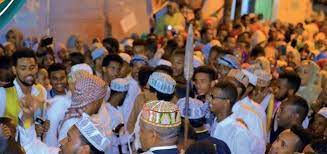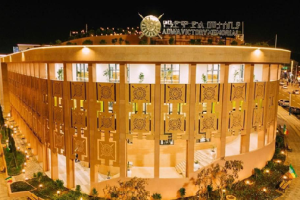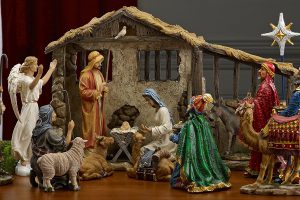
It is not merely a nationalistic bombast when we claim “We Ethiopians are people that boast an amalgam of magnificent cultures, religions, heritages, history and identity.” The reason rather resides in the fact that the aforementioned assets are tangible heritages, treasure troves which win a green light when weighed in the scale of consciousness.
It would not be exaggerating things to claim they need not further proofs. That is why we loath downloading what is not ours and veiling our perception clouding it with vanity. Though we lack the financial muscle to advertise our heritages, the heritages speak for themselves to galvanize tourists across the world to unearth the touristic jewels of this great nation.
For today’s consumption, let us zoom our eyes to eastern Ethiopia more specifically to the Harari Region and introduce esteemed readers to the Shewalid heritage that kicks off soon when the Ramadan Fasting season wraps up. The religious ceremony is held colorfully accentuated by cultural events and other societal affairs. Approached by journalists, regional culture and tourism bureau head Tweleda Abdeshashed light on the occasion based on researches on the intangible wealth of the regional cultural and tourism Bureau.
Shewalid
Observing all the fasting seasons of Islam is a religious obligation of all faithful of Islam starting from the time they came off age.The Shewalid fasting is one that comes in tandem with the Ramadan fasting. The eid AlFiter ceremony is celebrated the first day of Shewalid fasting month. This fasting season takes place in the shewal month,it derived its name from the month itself. It is a fasting month, which Prophet Mohammed was observing the major portion of his life. The Prophet was of the opinion that s/he who fasted six days during the Shewal month could assume s/he has fasted the whole year around.
According to this thought, the fasting season has been marked among the Harari’s for long all along the line. It is a Suna fasting observed as per the faithful’s volition..Suna is in keeping with the preaching of Prophet Mohammed or Yeresul preaching. It is an occasion a blessing or Ajer is gained? It is a fasting observed to make up for missed days in Ramadan fasting for some convincible reasons.
According to the faith it is possible to observe the Shewal fasting on a row.Status wise, both fasting are on equal footing. Yet doing it on the wake of Ramadan promises a better reward.
Needless to say women could interrupt fasting due to biological reasons such as menstrual cycle.They are expected to compensate for missed days during the Shewal fasting season. Among the Harare people compensating the missed days during the Shewal reason is taken preferable.
Surfing the tide of time this culture has put down roots. The core concept is reliving women’s burden. Allowing them fast the compensatory abstaining period along with fellow male Muslims create the vibe of oneness, cooperation and support. The faithful believe the reward from Alah is handsome.As such they mark the fasting aligning it with their work culture and tradition without any age, gender and class discrimination. They render it colorful. This has made the cultural heritage a living billboard of the Harari People and the manifestation of their identity. The Harari people here and abroad come together every year to colorfully observe the occasion.
Aside from Gursume,during the course of the past two decades now, it has been observed in Addis Ababa too by the Harari people,among others.
Relatively speaking,though the Muslim faithful observe the fasting they don’t mark it as colorful as the Harari people.
Nations and nationalities are constitutionally guaranteed the right to cultivate promote and permanently protect their cultures.
As per this right the day the Shewalid is observed is proclaimed regional national holiday. As government offices get closed the situation has added hues to the vibe of the celebration, which is winning recognition among different ethnic groups in the state and here in Addis. It as well is drawing attention across the globe. It has facilitated things so that others could draw lessons from the event. As such there is a call for to get thisheritage recorded in UNESCO’s intangible heritage list.
(-)The vibe of Shewalid
It is for three consecutive days the Shewalid event gets warmly marked inHarar.To show it is the hallmark of their culture the Harari people refers to the event “our Event” “An event that has a cultural backdrop.” They chant to a similar tune. Nation and nationalities in the environs ofHarari come to join the event. Adopting the culture it is not few that partake in the event—such as beating a drum.
Starting from the eves the ceremony extends to the actual day of celebration. Fathers and mothers supplicate Allah and commemorate and praise the Prophet.After celebrated at different corners it will be observed in a bigger pitch.Celebrants take respective positions some sitting and others standing
Children collect twigs towarm up their drums so that the drums emitpleasing sound.
// We have come after
Preparation big
For Awe Abadr
Each of us with a twig! //
It amounts to the well-wishing message “see you safe and sound next year” . The children proffer the twig to the elderly. The drum warming process proceeds. Those who beat the drum are experienced elders and youngsters who bequeathed the skill. They ready the musical instruments for the event.
Tambourines and sticks are among the musical instruments paraded.Based on the drum beats,synchronized dances will be staged. Fathers offer blessings while mothers and young girls ululate and clap.Men crane their necks from left to right and repeat the chanting. The commemorating song lauds peaceful coexistence.Peace on you Prophet Mohammed they say. Celebrants visiting different centers mark the occasion.
This year celebration has brought many together making Harar the melting pot of the world.
BY STAFF REPORTER
The Ethiopian Herald 11 May 2022





